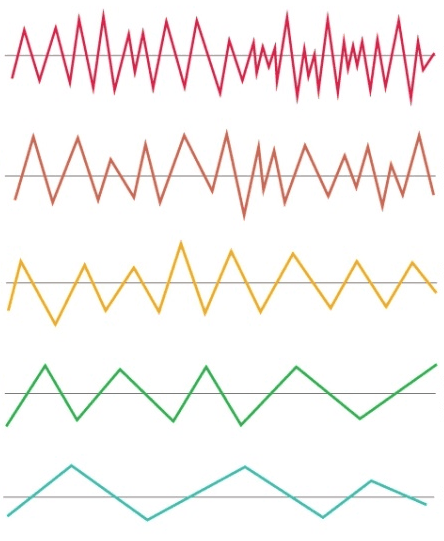
Brainwaves, from top: beta, gamma, alpha, theta, delta
You can steer yourself any direction you choose.
You’re on your own. And you know what you know.
And YOU are the one who’ll decide where to go…”
—Dr. Seuss
Did you know that our brains exhibit five different states of brainwave activity? Did you know that one of those states is ideal for learning, and that it’s possible to access that state through visualization?
Dr. Georgi Lozanov, a Bulgarian scientist, was a pioneer in accelerated learning and coached Bobbi DePorter, SuperCamp’s founder, in the early days of SuperCamp’s creation. In the mid-1970s, Dr. Lozanov conducted experiments on the best brainwave state for learning. He discovered that students in alpha state—a condition of relaxed concentration—learn at a much faster rate. They also remember information for longer periods of time. The other states of brainwave activity are beta (alert and active), theta (nearly asleep or dreaming), delta (deep, dreamless sleep), and gamma (higher mental activity, high energy, extreme focus).
Q-Up to Access Alpha State
The best part of Lozanov’s discovery is that it’s not only possible, but easy to access alpha state once the process is learned. This can be achieved in a number of ways, one of which we teach at SuperCamp. Q‑Up is a simple four-step technique to access alpha state. Here are the steps.
|
Step 1: |
PULL UP Imagine a string attached to the top of your head pulling you up. |
|
Step 2: |
PICTURE what you want. It could be to complete an excellent essay in the next hour. It could be to read the next chapter in 30 minutes with understanding. It could be to feel joy while practicing your speech. |
|
Step 3: |
BREATHE deeply in through your nose and out through your mouth, and as you breathe out . . . |
|
Step 4: |
RELEASE your jaw and shoulders keeping the picture of what you want in mind. |
Then begin. If you feel your mind wondering, stop and Q-Up again.

With practice, this process only takes a moment to quickly access the alert and calm state of alpha brainwaves, the optimum state for learning. Dr. Lozanov was well known for creating a remarkably effective method of teaching based on how the brain actually learns, and alpha state was an important part of that process.
Theta Scan to Learn While You Sleep!
There’s another brainwave state that facilitates learning. Brain researchers have learned that we process our thoughts and learnings during the night and that our brains focus on the thoughts we had closest to falling asleep. So, instead of TV, video games, etc., if students take a quick scan (just ten minutes or so) of their schoolwork just before falling asleep, it can make a big difference in what they remember and in their understanding of what they studied. At SuperCamp we call this a theta scan because it happens during theta brainwave activity while we’re asleep! What a bonus to let our brain keep on learning while we sleep!
So remember the importance of those alpha and theta brainwaves—they really can help you learn, even while you sleep!
